In 1855 the explorer Augustus Charles
Gregory, financially backed by the Colonial Office, sailed from Moreton Bay, around the coast of Queensland and the Northern Territory and up the
Victoria River.
Gregory's boat was wrecked at the site of
Timber Creek and it is claimed that
Gregory named the site after cutting timber to repair his vessel.
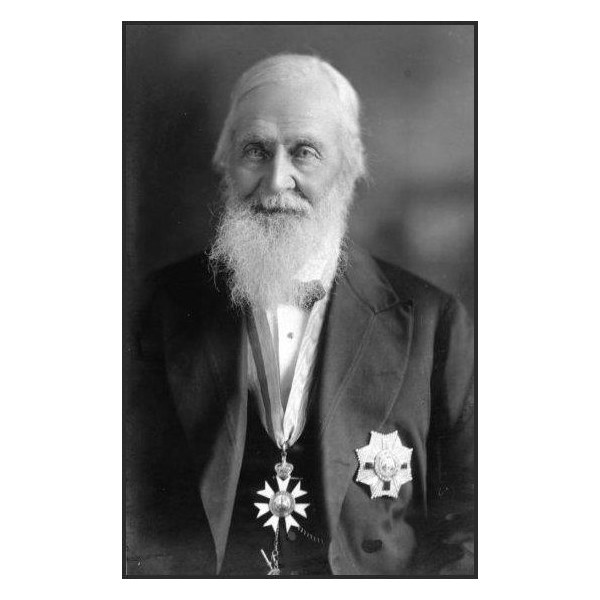
Augustus Charles Gregory, 1903
The site of
Gregory's
camp, known as
Gregory's Tree Reserve, can be found to the west of the town. The
boab tree with the date '2 July 1856' clearly carved in it can be accessed from a track which runs from a cairn on the Victoria Highway to the tree at the riverside. Over a period of eight months
Gregory with various numbers of the expedition explored large areas of the
Victoria River catchment and penetrated nearly 500 km south, along
Sturt Creek, to the edge of the
Great Sandy Desert.
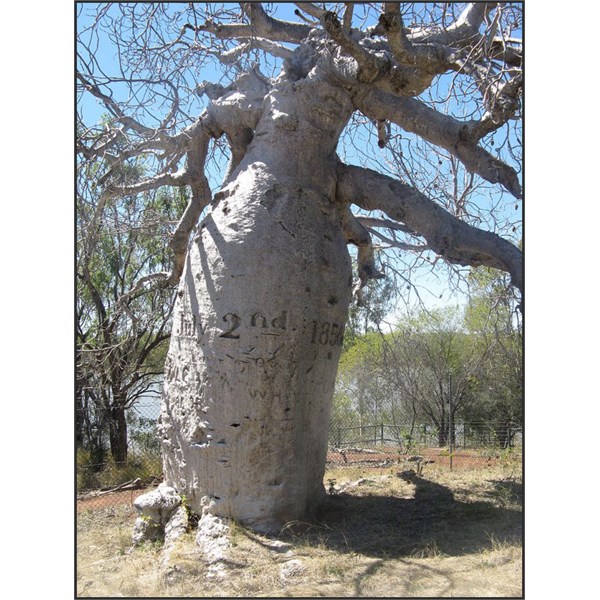
Gregory's Tree by the Victoria River, west of the town
was one of the many believers in an 'inland sea' within Australia’s centre. He explored the Elsey, Roper and McArthur Rivers, in 16 months travelling more than 8000 km. The subsequent settlement of the area resulted in
Timber Creek becoming an important port for the surrounding cattle stations particularly
Victoria River Downs Station which was then the largest pastoral enterprise in Australia. The river was used until the 1930s when road transport made it redundant. A police station was first established in
Timber Creek in 1898. Initially just a hut and a goat yard, the dwellings were upgraded to iron and steel in 1908, now the
Timber Creek Police Station Museum.
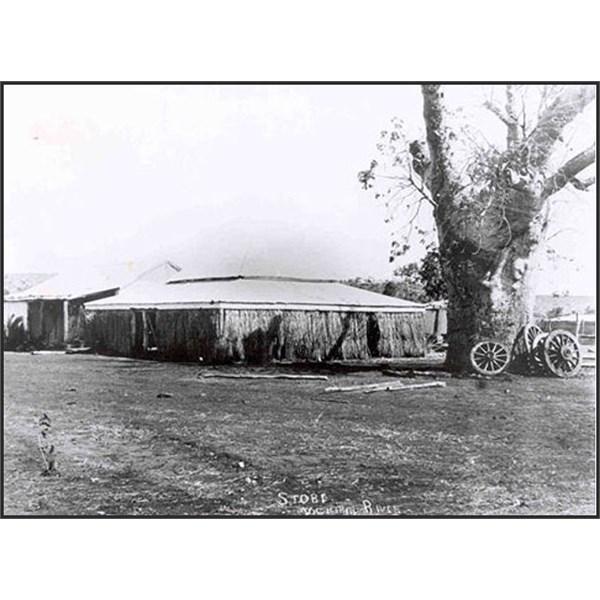
Victoria River depot store near Timber Creek 1911
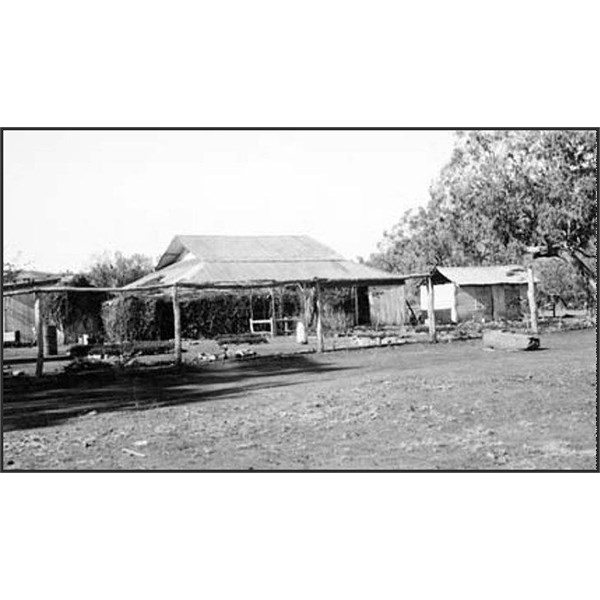
Police Station Timber Creek 1924
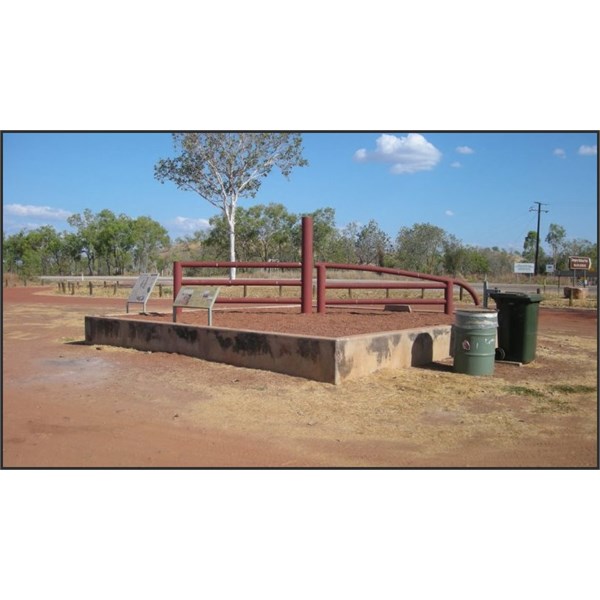
Durack Memorial , East of the Town

Sign at Durack Memorial near Timber Creek
The town features several attractions that preserve its rich pastoral and exploration
heritage and fishing is one of
Timber Creek's biggest draw cards. The beautiful
Victoria River, running through deep valleys and gorges, is one of the Northern Territory's most scenic
places to catch barramundi.
Gregory National Park is
Timber Creek’s backyard. Covering an area of approximately 13 000 sq km, the park is
home to red-rimmed escarpment ranges, plunging gorges and ancient boab trees.
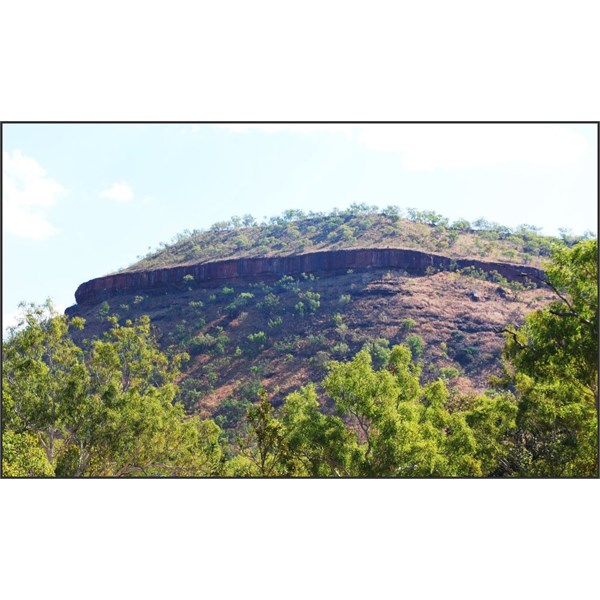
Hill near Timber Creek
The 2/1st North Australia Observer Unit (2/1 NAOU) was an Australian Army reconnaissance unit of World War II. Formed in early 1942 in the Northern Territory, the unit was a light horse mounted unit that was tasked with providing early warning of Japanese activity in northern Australia at a time when an invasion of the country was expected. As the threat of Japanese invasion dissipated the unit's operations were curtailed in 1943 and it was eventually disbanded in the early months of 1945. The unit is considered to be a predecessor of several reconnaissance units that currently exist within the Australian Army

Troopers of the North Australia Observer Unit during a morning parade in October 1943

(Maj) William Edward Hanley Stanner, 2/1st North Australia Observer Unit
Formed on 11 May 1942 under the command of Lieutenant Colonel Bill Stanner, the unit's headquarters was established in
Katherine, Northern Territory. Nicknamed the "Nackeroos", the unit was raised at a time when the Japanese were steadily advancing in the Pacific.
Broome had recently been bombed and an invasion of Australia was considered a possibility.
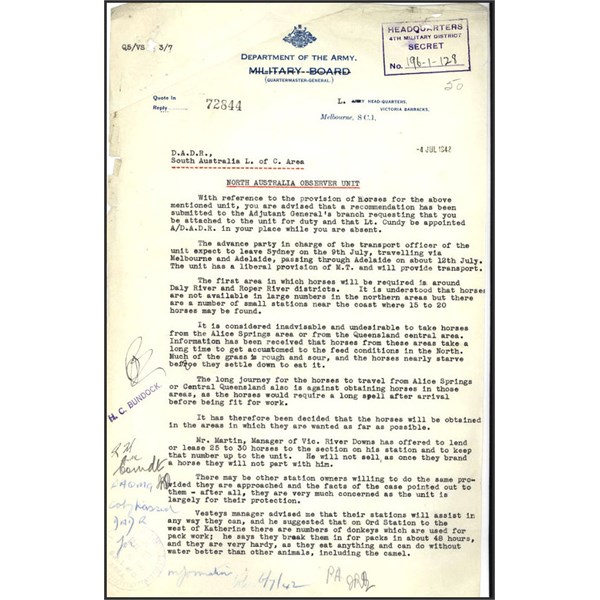
North Australia Observer Unit Page 1
Concerned about the large unobserved sea and air approaches to northern Australia, specifically in the
Kimberley region and in the Northern Territory, the Army tasked 2/1 NAOU with patrolling remote areas of northern Australia on horseback to provide early warning of Japanese activity to Northern Territory Force, which was tasked with defending the area in the event of an invasion. Other tasks included manning fixed coast watch stations and signals work. At the peak of its strength it numbered approximately 550 men, including 59 Aboriginal personnel who were employed as guides and labourers. As the threat of Japanese landings declined 2/1 NAOU patrols were reduced in July 1943 and the unit was disbanded in March 1945.
In 1972, Stanner summarised the unit in the following terms to Amoury Vane, the author of the unit's history:
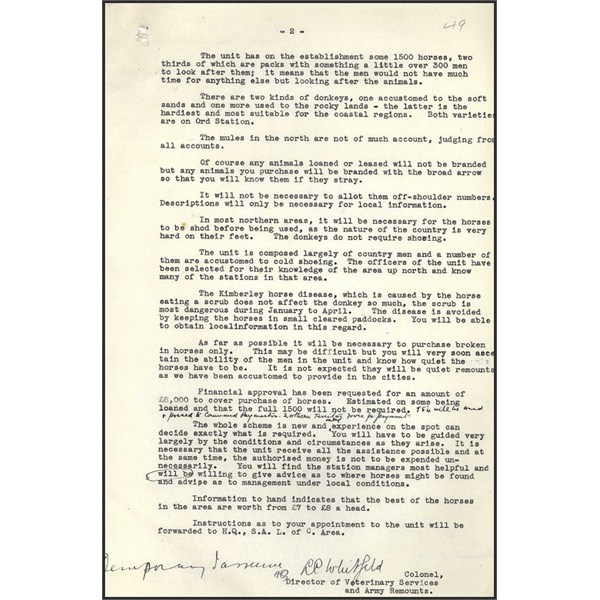
North Australia Observer Unit Page 2
"The Unit was organised somewhat on the lines of a Light Horse regiment but with commando-type flexibility. It had a strategic and tactical role with duties of reconnaissance, scouting and coast-watching and was widely dispersed on and off the coasts and inland, between Cambridge Gulf and the Gulf of Carpentaria. The members of the Unit tended to operate in very small groups, often of section strength, over an enormous area, manning observation posts or in fixed or mounted roving patrols, so as to answer for the flanks of Northern Territory Force. They seldom assembled as troops, companies, or squadrons, and never, while I was in command, as a single Unit, after once taking up their field stations.